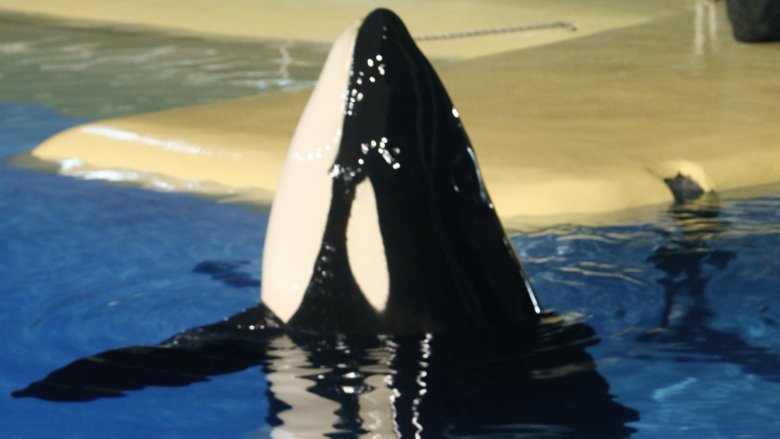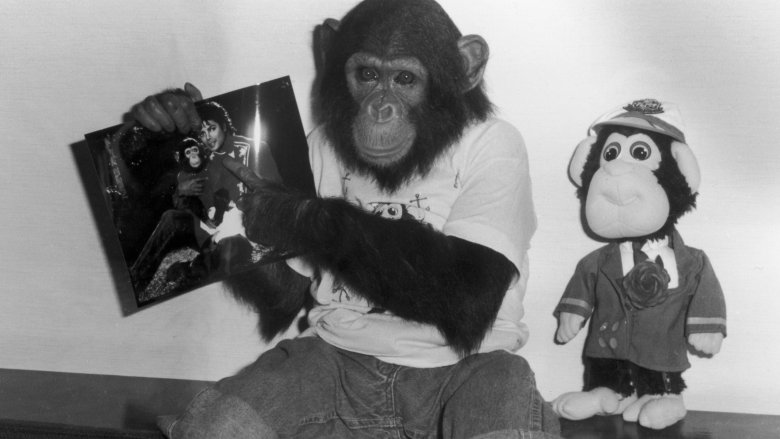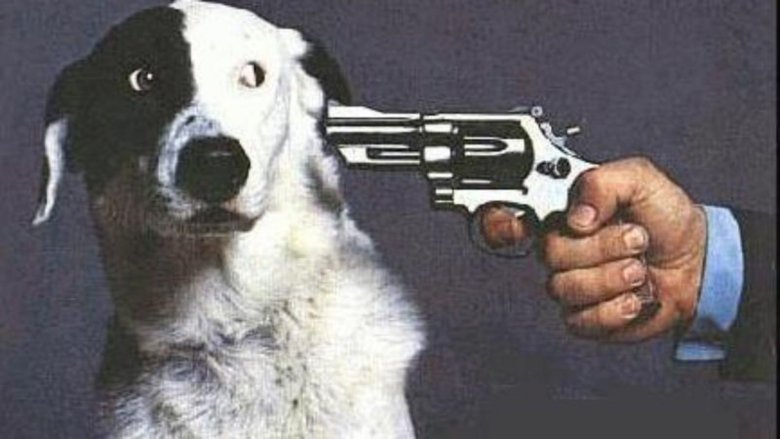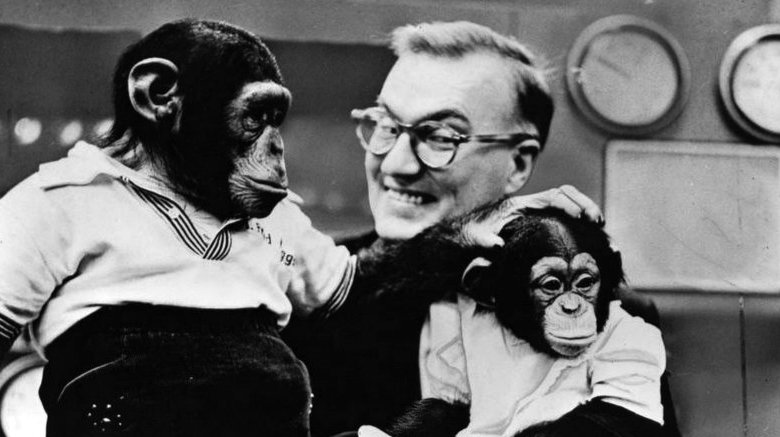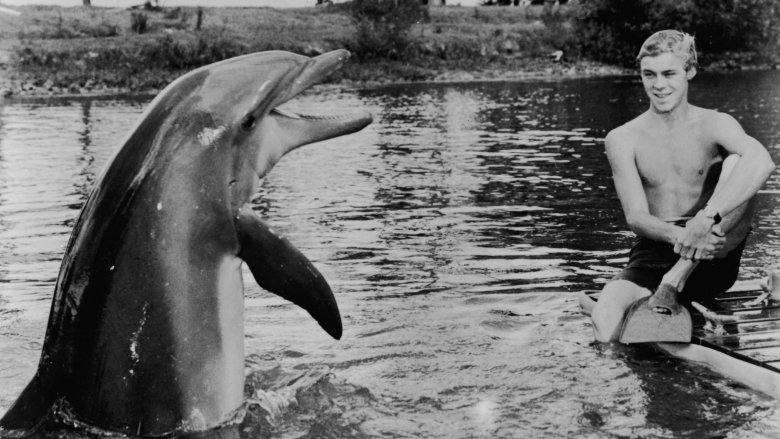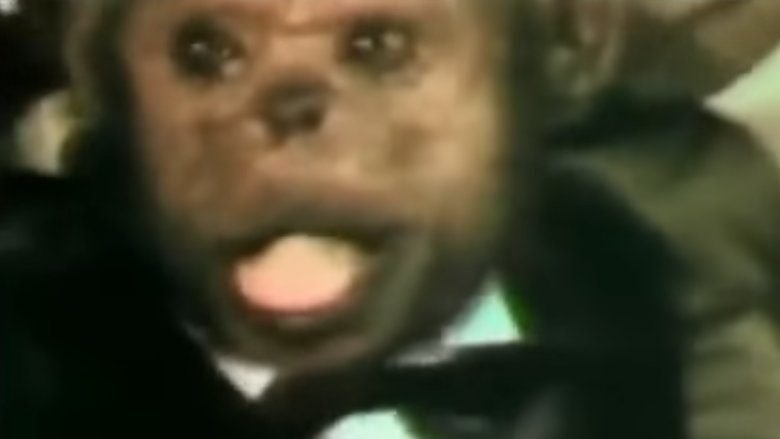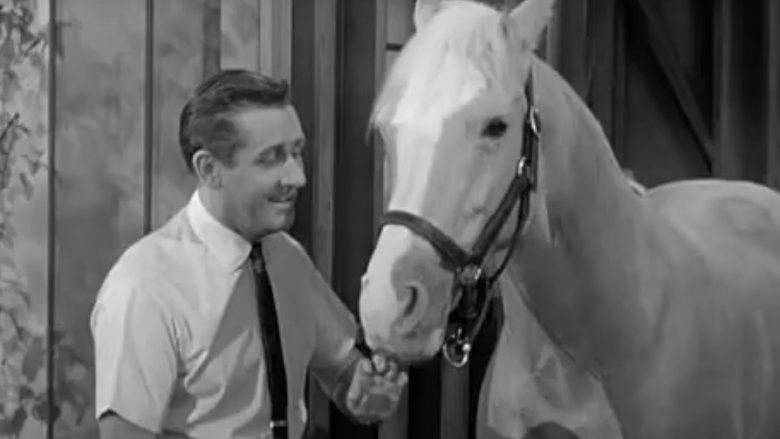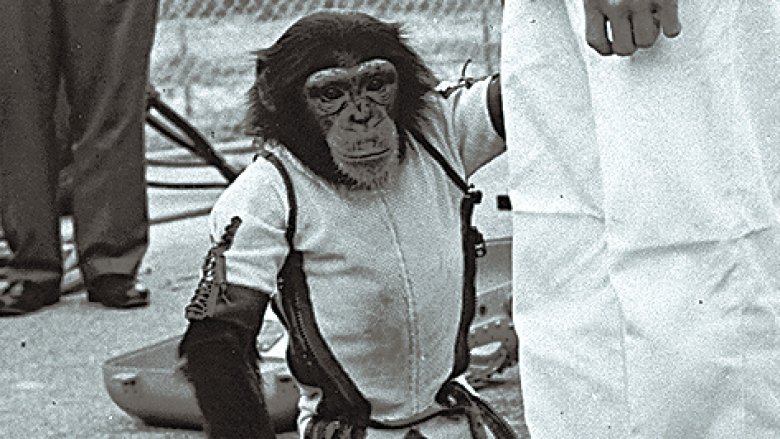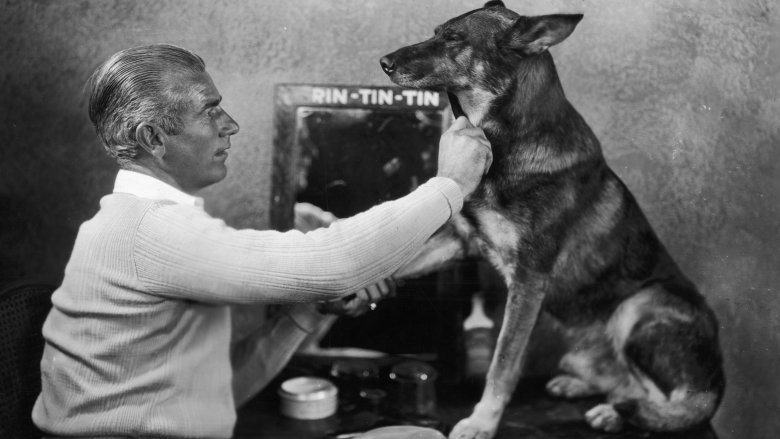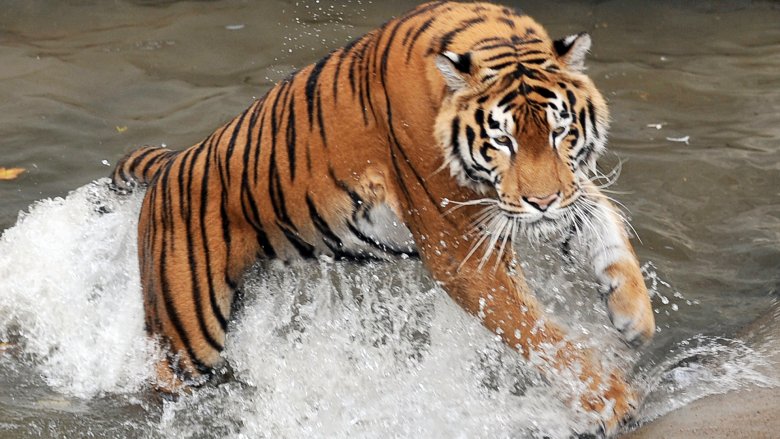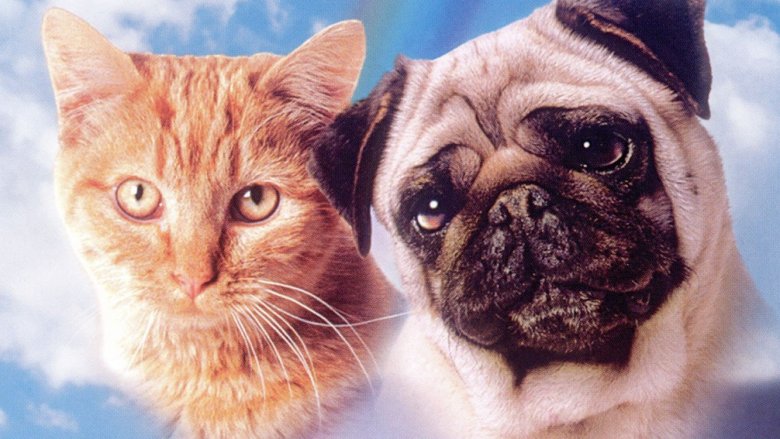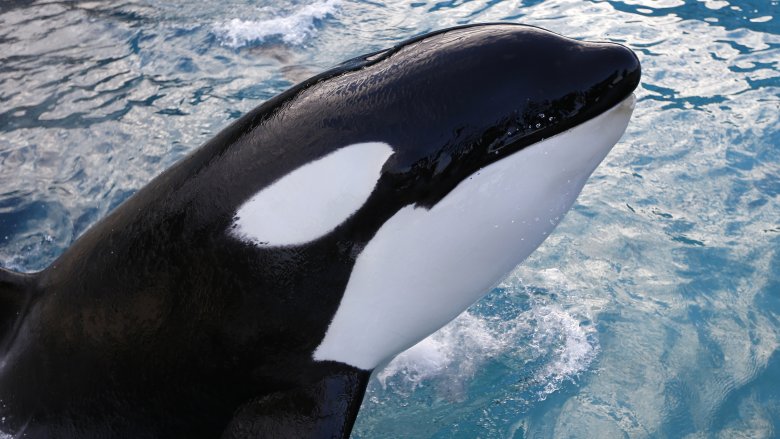The Messed Up Lives Of Famous Animals
Youth may be wasted on the young, but fame is definitely wasted on the animals. Whether they're a sitcom star or a big screen scene stealer, these pups and pussy cats don't know they're famous. Heck, they don't even know what fame is. How would you explain the concept of celebrity to a famous animal? And remember, you can only use the words "sit," "stay" and "good boy."
The fact is, all the benefits of making it in Hollywood, the bulging bank accounts, impossible dinner reservations and endless groupies, don't mean a thing to our four legged friends. And when you strip the perks from the lifestyle of the rich and famous, what's really left, but the pressure to perform, and the dire consequences if you don't.
To be a A-list animal too often means a lifetime of abuse, neglect, torture, all in the hopes of pleasing your master, and snatching one more tasty treat. Sadly, whether it's Flipper or Willy the whale, Mister Ed or J. Fred Muggs, making it in Hollywood is just about the worst thing that ever happened to these famous animals.
Bubbles the Chimp was abandoned by Michael Jackson
Bubbles was once the most famous primate in the world, fastened to the hip of his constant companion, music superstar Michael Jackson. Thankfully, those days are long gone. Since 2005, he's enjoyed a well-earned retirement spending his time surrounded by other famous chimps, like Oopsie from the 1970s show B.J. and the Bear, and Ripley, who famously once spat on Kramer during an episode of Seinfeld. Sadly, it took many years to arrive here.
In the '80s, you couldn't blink without catching a glimpse of Bubbles, often dressed in matching outfits with his famous friend. The chimp slept in a crib in the eccentric singer's bedroom at Neverland Ranch, and even used his toilet when the two weren't touring the world.
The King of Pop adopted Bubbles from a research facility in the early '80s, by one report having him ripped from the arms of his mother. The two soon became inseparable, helping to usher in the "Wacko Jacko" phase of the singer's career. Unfortunately, if predictably, Bubbles grew up, and grew unmanageable, even attacking a young Rashida Jones at one point. The superstar soon unloaded him on an animal trainer, before the Center for Great Apes took him in in 2005. These days he still recoils from cameras, the lasting legacy of his time in the gloved one's orbit.
National Lampoon pup was the victim of an unsolved murder
It was just a matter of time until Cheeseface the dog took a bullet. His story started on the cover of National Lampoon, a comedy magazine that was struggling to keep its doors open in the early '70s until the pooch graced its cover with a gun to its head. The caption beneath his furrowed brow read, "If You Don't Buy This Magazine, We'll Kill This Dog." The magazine instantly became a hit.
Cheeseface soon retired to a farm upstate. No really, he did. This isn't like your pet pooch from childhood. Oh no. Did you not know what really happened to ... you know what, never mind. Let's just say Cheeseface didn't let celebrity go to his head, living the simple life out in the country.
That is until someone tracked down the black and white mutt and put a real bullet in its head. To this day no one knows how or why this happened, but it shows that there's a price to pay for being famous, even if you're just a dog with a dream.
Today show chimp was drugged by his co-star
The Today show may feel like an institution these days, but back in 1953 it was the new kid on the block, and it was tanking. Host Dave Garroway just wasn't moving the morning needle, so the news program did what any responsible journalist would in the situation and brought in a chimp to co-star.
Yep, J. Fred Muggs the chimpanzee was brought on board and instantly turned the show into a smash, by some accounts earning NBC an extra $100 million in the process. The 10-month-old primate lit up the screen, with over 350 outfits and a talent for the piano. He was soon going on worldwide tours and rivaling Hollywood's biggest stars in terms of celebrity. The '50s were weird, y'all. Anyway, viewers couldn't get enough. But one person could, and that was Garroway.
The jealous co-host was furious he had to share the air with an animal, and according to rumor, tried to sabotage the whole experiment. Allegedly, Garroway started lacing Muggs' orange juice with Benzedrine, hoping to amp up the animal and create a scene on air. Muggs would last five years on the show, surviving a rumor that he bit his co-star and on-set tantrums that became legendary. When Muggs was finally replaced with a younger chimp (typical), he was moved into a cottage of his own in Florida. And get this, he lives there to this day, still going strong in his sixties as of this writing.
Flipper committed suicide
Kathy the dolphin was one of five porpoises to play Flipper, and she was definitely the one with the grisliest ending. In a world where dolphins are forced to be mauled by drunk tourists at overpriced resorts, you'd think a TV star would have a better life. But according to animal rights activist and former dolphin trainer Richard O'Barry, she actually chose to end her life rather to endure any more time in captivity.
O'Barry was actually the one to capture Kathy in the wild and train her into the Flipper she would become. But living in an isolated chamber isn't all it's cracked up to be, and she just couldn't take it anymore. As O'Barry recalls it, she swam into his arms, then held her breath and sank to the bottom of the pool.
"The suicide was what turned me around," O'Barry told Time magazine. "The [animal entertainment] industry doesn't want people to think dolphins are capable of suicide, but these are self-aware creatures with a brain larger than a human brain. If life becomes so unbearable, they just don't take the next breath. It's suicide." In fact, Kathy isn't the only dolphin to commit suicide in captivity. Peter the bottlenose dolphin famously did the same thing, after being separated from his trainer, animal researcher Margaret Howe Lovatt, who famously led an experiment centered on the dolphin in the '60s that included "adult" favors. Mhmm.
Oliver the Humanzee was sold to a research facility
Has any famous animal ever created quite the commotion of Oliver "The Humanzee?" After being brought to America from the Congo in the 1960s, his uniqueness was immediately apparent. For one, he walked upright without being trained to do so. His features were smaller, his eyes lighter, and his hair had the look of male-pattern baldness. He just seemed more human than other chimps, to the point that rumors circulated that he was a hybrid.
When he moved in with Frank and Janet Burger, animal trainers famous for their work on The Ed Sullivan Show, he began doing chores spontaneously and even developed a habit of morning coffee and evening cocktails. He was soon being transported around the world, meeting foreign dignitaries in tuxedos and being billed as some kind of missing link.
Unfortunately, with puberty came an attraction to human females, and he was forced to move on from his trainers, sold to a lab in 1986. Thankfully, because he was so unique, the research facility didn't know what to do with him. He spent his waning days in a chimpanzee preserve, surrounded by his own kind for the first time. And while rumors persisted for years that he had 47 chromosomes, the number between a normal human and a normal chimp, when he was finally tested in 1996, he had 48, proving once and for all that he was just a unique ape, and not a hybrid.
Someone accidentally killed Mister Ed
A horse is a horse, of course, of course, unless that horse is Mister Ed — or, if we're going by his birth name, Bamboo Harvester. But Bamboo, who played the famous equine on the popular series for years, is also famous for the mystery surrounding his death.
While Mister Ed has a permanent burial site in Oklahoma, with funds raised for the tombstone by the show's fans, the series' star, Alan Young, once said the burial plot was fraud. In fact, a stunt horse, used for promotional shots, was buried in Oklahoma. The real Mister Ed allegedly met a much more sordid demise. According to Young, as Bamboo aged, he was being tended to by a secondary caregiver, who grew concerned one day when he saw the horse rolling around on the floor, unable to get up. Unsure of what to do, he gave the horse a tranquilizer but got the dosage wrong, overdosing the geriatric gelding. Bamboo died as a result, and the death was covered up.
Suffice it to say, the good people of Oklahoma aren't too happy with the revelation. One writer wrote in Weird Oklahoma, "Multiple dogs have played Lassie, and none of them are considered 'false' Lassies. Therefore, we say Tahlequah is indeed the final resting place of everyone's favorite talking horse."
A malfunction tortured a NASA chimp in space
We like to think of our early astronauts as all-American heroes. Men who had the right stuff, and had it in spades. But before they ever slipped the surly bonds of Earth, NASA had to make sure they would survive the slipping. That's where a slew of test animals came in, most famously a highly trained team of chimpanzees who surely had no idea what they were getting themselves into.
There was Ham, the first primate in space, and Enos, the first American primate to orbit the Earth. But it was Enos who experienced one of the darkest moment in NASA's history when the "avoidance conditioning" the chimps had been trained in backfired.
It was a malfunctioning switch that did it, shocking Enos no matter what button he hit. Every time the chimp cycled through his routine, doing all the right things, he'd get stuck on the broken switch again, and receive dozens of shocks before the system automatically moved on. It was torture, not helped by the fact that the poor primate had just been launched in the cold reaches of outer space. By the time his capsule returned to Earth, it missed its landing spot, and he was stuck inside for another three hours. Sadly, no parades welcomed him back. In fact, he would be dead within the year, from a nasty case of dysentery.
Rin Tin Tin was rescued from the battlefields of World War I
Rin Tin Tin, the real-life dog, lived a life nearly as legendary as the parts he played in the movies. While he was one of the biggest stars of the silent film era, his beginning could not be more humble. He was found by Lee Duncan, an American serviceman, during World War I, the sole survivor of a destroyed kennel.
Rinty, as Duncan called him, would go on to live the American dream, becoming a box office draw who reviewers argued could really act. NPR journalist Scott Simon called Clash Of The Wolves "his Hamlet" due to his athletic ability and "immensely expressive" face.
While there were rumors that he died under extraordinary circumstances, maybe even in the arms of screen siren Jean Harlow, the truth is unclear. It was just his time. Still, an orphan rescued from a bombed-out building who goes on to be one of the biggest stars in the world? Now that's a story that could be turned into a movie.
'Life of Pi' tiger nearly dies, animal rights monitor tries to cover it up
The American Humane Association has one job, and that's to protect animals. But, as The Hollywood Reporter sussed out in 2013, things aren't always what they seem. Gina Johnson was a monitor for the AHA on the set of the Ang Lee film Life of Pi. Her job was to make sure King the tiger, who played one of the pivotal roles in the film, was being used responsibly. And boy did she mess that up. During one particularly challenging shot, King had to swim in a tank of water, but something went wrong.
As Johnson emailed a colleague in 2011,"Last week we almost f*cking killed King in the water tank. ... This one take with him just went really bad, and he got lost trying to swim to the side ... damn near drowned. ... I think this goes without saying but DON'T MENTION IT TO ANYONE, ESPECIALLY THE OFFICE!" Finally, she punctuated the email with the statement, "I have downplayed the f*ck out of it."
Not good when the one person responsible for your safety is actively trying to cover up abuse. The AHA did respond to the controversy: "[Johnson] probably overreacted. Was it a close call? What is indisputable was that no harm came to King. Could you argue he had a moment? But he continued to work." No worries, everyone! Surely he would have said something if he was really upset.
The 'Milo and Otis' animals were tortured
There once was a children's film called The Adventures of Milo and Otis, about a kitty cat and a puppy dog who were best friends. It was full of adventure, intrigue, laughs, and loads of cute, cuddly creatures. And, if legend is to be believed, it was also a veritable snuff film.
When the film originally debuted in Japan in 1986 under the title Koneko Monogatari (A Kitten's Story), it was geared toward adults, with a number of harrowing scenes that were eventually cut from the American version. Chatran the cat, renamed Milo for American audiences, was soaked in freezing cold water, thrown over a waterfall and off a cliff into the ocean. According to rumors, one of Japan's biggest animal-rights group stated that over a third of the 30 cats used for the film did not survive the process, and a 1990 article in the tabloid Sunday Mail claimed one cat's paw was intentionally broken so it would limp through a scene.
While Columbia Pictures drastically altered the movie for American audiences, adding goofy narration from Dudley Moore and a subplot about the pup and cat adopting a baby chick, many of the more disturbing stunts are still visible in the film. If anything, the tag in the end credits reading "the animals used were filmed under strict supervision with the utmost care for their safety and well-being," was disturbing, considering it would normally read something like "No animals were harmed."
'Free Willy' whale had to be trained to be a whale again
It could have been a story for the ages, a movie star whale returned to the wild after years of neglect. Sadly, this story would not have a happy ending. Keiko the killer whale was captured as a pup off the coast of Iceland in the '70s. Separated from his family, he was trained to perform tricks at a water park in Mexico. It was a difficult life, and one we probably never would have heard about had he not been cast as the star of the 1993 hit film Free Willy.
The plot of the movie centered on a boy trying to free a friendly whale from captivity, bringing the irony of Keiko's life front and center. In fact, as the New York Times reported, Keiko was "forced to swim in endless circle [sic], his dorsal fin drooped. He was seriously underweight, and he developed lesions from a skin virus." Indeed, if nothing was done, Keiko would have died in months.
Money soon poured in from around the world. Fans scrimped and saved, adding to a pool of cash from Warner Brothers and the Humane Society. The plan was to train Keiko to be a whale again, and then release him into the wild. Unfortunately, no matter the intentions, some dreams are too big. Keiko was indeed released into Norwegian coastal waters, monitored and fed for about a year, before suddenly dying of pneumonia. He was 27 years old, and for a brief moment, finally free.
